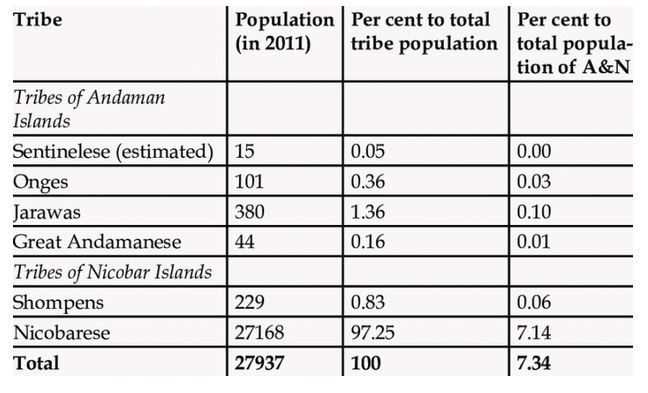Note4Students
From UPSC perspective, the following things are important :
Prelims level: Aboriginals in Andaman and Nicobar Islands, PVTGs
Why in the news?
The king and queen of the “Onge tribe” welcomed a baby boy in the Andaman Islands, marking a significant moment for the tribe. With the arrival of the newborn, the tribe’s total population now stands at 136, as confirmed by an official source.
About Onge Tribe
- The Onge are PVTGs (Particularly Vulnerable Tribal Groups) native to the Andaman Islands.
- They have traditionally been hunter-gatherers and fishers, while also practising cultivation.
- Their population significantly decreased after colonization, from 672 in 1901 to around 100.
- They practice a form of animism, with ancestor worship being significant.
- They traditionally make decisions through group consensus.
- Today, the surviving members are confined to two reserve camps on Little Andaman: Dugong Creek in the northeast, and South Bay.
- Genetically, the Onge are distantly related to East Asian populations and show affinities with Southeast Asian Negrito ethnic groups.

Other Indigenous People of Andaman and Nicobar
1. Great Andamanese Tribe
- One of the largest tribes, the Great Andamanese tribe is currently settled on the Strait Island under the Andaman & Nicobar Administration. Despite their historic bravery, diseases and other challenges have reduced their population to 43 individuals as of the 2001 census.
- Government initiatives: The administration provides housing, coconut plantations, and rationing to support their livelihoods and well-being.
2. Jarwas Tribe
- Jarwas inhabit the Western coast of the Middle and South Andaman Islands. They are known to be hostile but have shown receptivity to friendly contact expeditions since 1974. Their present numbers are estimated at between 250–400 individuals.
- Jarwas are nomadic hunters and gatherers, using traditional methods like bows and arrows for hunting and fishing.
3. Sentinelese Tribe
- Sentinelese reside on the small North Sentinel Island, maintaining a wary stance towards outsiders.
- Despite initial scepticism, contact expeditions have made progress since 1991, albeit with caution.
Note: Shompen Tribe are native to the Nicobar Islands.
Who are the Particularly Vulnerable Tribal Groups (PVTGs)?
Origin of the concept
Features of PVTGs
|
PYQ:[2019] Consider the following statements about Particularly Vulnerable Tribal Groups (PVTGs) in India:
Which of the statements given above are correct? (a) 1, 2 and 3 (b) 2, 3 and 4 (c) 1, 2 and 4 (d) 1, 3 and 4 |
Get an IAS/IPS ranker as your 1: 1 personal mentor for UPSC 2024
